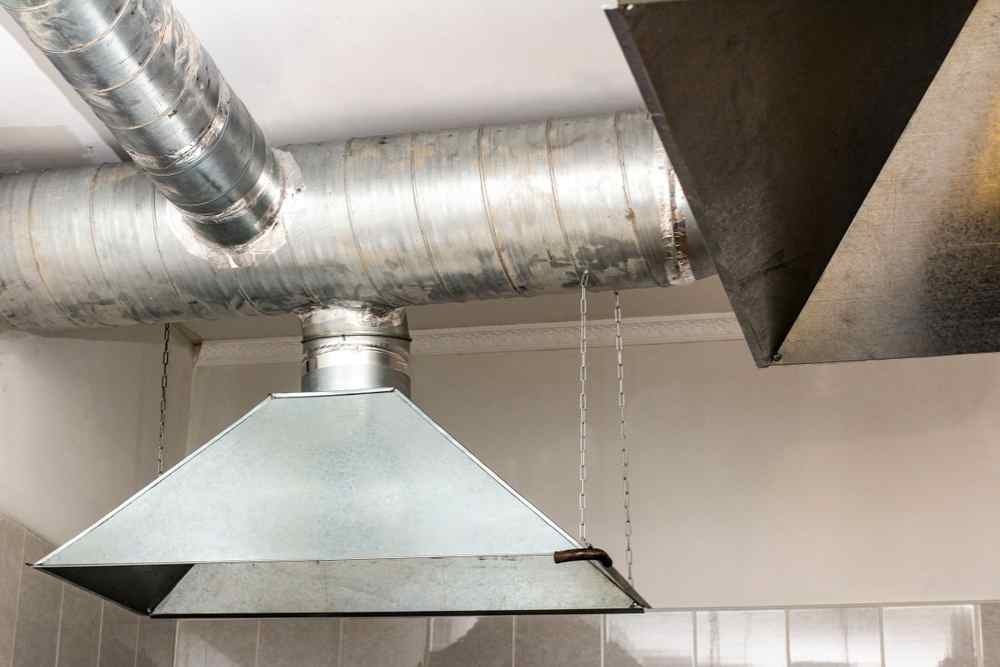What are the Requirements for Efficient Kitchen Exhaust Ventilation

Ontario-wide Kitchen Exhaust and Hood Cleaning – Best prices and service guaranteed.
Efficient kitchen exhaust ventilation is crucial for maintaining a healthy and comfortable environment in any commercial or residential kitchen. It helps to remove smoke, odors, and airborne contaminants, ensuring a safe and pleasant cooking experience. In this article, we will explore the requirements for efficient kitchen exhaust ventilation, including the importance of proper design, sizing, and maintenance.
The Importance of Proper Design
When it comes to kitchen exhaust ventilation, proper design is the foundation for efficiency. A well-designed system takes into account the specific needs and requirements of the kitchen space, ensuring that the ventilation system effectively captures and removes pollutants.
Here are some key factors to consider when designing a kitchen exhaust ventilation system:
- Cooking Equipment: The type and size of cooking equipment in the kitchen play a significant role in determining the ventilation requirements. Different appliances produce varying amounts of heat, smoke, and grease, which must be adequately captured and exhausted.
- Kitchen Layout: The layout of the kitchen, including the location of cooking equipment, sinks, and food preparation areas, affects the efficiency of the ventilation system. Proper placement of exhaust hoods and ductwork ensures that pollutants are effectively captured and removed.
- Airflow Patterns: Understanding the airflow patterns within the kitchen is essential for designing an efficient ventilation system. This includes considering the direction of air movement, potential obstructions, and the placement of supply and exhaust vents.
- Building Codes and Regulations: Compliance with local building codes and regulations is crucial for ensuring the safety and efficiency of the kitchen exhaust ventilation system. These codes often specify requirements for hood height, ductwork materials, fire suppression systems, and more.
Ontario-wide Kitchen Exhaust and Hood Cleaning – Best prices and service guaranteed.
The Importance of Proper Sizing
Proper sizing of the kitchen exhaust ventilation system is another critical requirement for efficiency. An undersized system will struggle to capture and remove pollutants effectively, while an oversized system may lead to excessive energy consumption and noise levels.
When determining the appropriate size for a kitchen exhaust system, several factors should be considered:
- Cooking Load: The cooking load, or the amount and type of cooking that occurs in the kitchen, is a primary consideration for sizing the ventilation system. High-volume kitchens with heavy cooking loads require larger exhaust systems to handle the increased heat, smoke, and grease production.
- Airflow Rate: The airflow rate, measured in cubic feet per minute (CFM), determines the capacity of the exhaust system. It is essential to calculate the required CFM based on the size of the kitchen, the type of cooking equipment, and the cooking load.
- Hood Capture Efficiency: The capture efficiency of the exhaust hood is a crucial factor in determining the required airflow rate. A properly designed and installed hood ensures that pollutants are effectively captured at the source, reducing the overall ventilation requirements.
- Ductwork Design: The design and layout of the ductwork system also impact the sizing of the exhaust system. Properly sized ducts with minimal bends and obstructions help maintain the required airflow rate and minimize pressure losses.
Ontario-wide Kitchen Exhaust and Hood Cleaning – Best prices and service guaranteed.
The Importance of Proper Maintenance
Efficient kitchen exhaust ventilation is not a one-time installation; it requires regular maintenance to ensure optimal performance. Neglecting maintenance can lead to reduced efficiency, increased energy consumption, and potential fire hazards.
Here are some essential maintenance requirements for efficient kitchen exhaust ventilation:
- Cleaning and Grease Removal: Regular cleaning of exhaust hoods, filters, and ductwork is crucial for maintaining proper airflow and preventing the buildup of grease. Grease accumulation not only reduces the efficiency of the system but also poses a significant fire hazard.
- Inspection and Repair: Regular inspections of the exhaust system, including the hoods, ductwork, and fans, help identify any issues or damage that may affect performance. Prompt repair and replacement of damaged components are necessary to maintain efficiency.
- Fan Maintenance: Proper maintenance of exhaust fans, including lubrication, belt replacement, and motor inspection, ensures smooth and efficient operation. Malfunctioning fans can lead to reduced airflow and increased energy consumption.
- Monitoring and Control: Utilizing monitoring and control systems can help optimize the performance of the kitchen exhaust ventilation system. These systems can adjust fan speed based on cooking load, detect malfunctions, and provide real-time data on energy consumption.
Ontario-wide Kitchen Exhaust and Hood Cleaning – Best prices and service guaranteed.
Efficient kitchen exhaust ventilation is essential for maintaining a healthy and comfortable environment in any kitchen. Proper design, sizing, and maintenance are key requirements for achieving optimal performance.
When designing a kitchen exhaust system, factors such as cooking equipment, kitchen layout, airflow patterns, and building codes must be considered. Sizing the system based on the cooking load, airflow rate, hood capture efficiency, and ductwork design ensures that pollutants are effectively captured and removed.
Maintaining the kitchen exhaust system through regular cleaning, inspection, and repair is crucial for long-term efficiency. Neglecting maintenance can lead to reduced performance, increased energy consumption, and potential fire hazards.
By understanding and implementing these requirements, kitchen owners and operators can ensure efficient ventilation, creating a safe and pleasant cooking environment for all.
Learn more about “Tips for Proper Ventilation of Cooking Equipment” right here.
Frequently asked questions about What are the Requirements for Efficient Kitchen Exhaust Ventilation.

1️⃣ What Type of Hood System is Best for My Kitchen? 🤔
Great question! The best type of hood system largely depends on what you’re cooking and how you’re cooking it. There are Type I and Type II hoods; Type I hoods are generally used for cooking methods that produce grease and smoke, like grilling or frying. Type II hoods are used for cooking methods that don’t produce grease, such as baking or steaming. 🍳🍔
If you run a fast-food restaurant with lots of frying, a Type I hood is a must. For bakeries or other less greasy cooking methods, a Type II may suffice. Regardless of the type, make sure it’s installed and vented properly for maximum efficiency! 👨🔧
2️⃣ How Often Should I Have My Kitchen Hood and Exhaust System Cleaned? 🗓
Ah, the age-old question! Frequency of cleaning depends on the volume of cooking and the type of cooking you’re doing. High-volume kitchens may require monthly cleanings, while low-volume kitchens might only need semi-annual cleanings. 📅
Here’s a general rule of thumb:
- High-volume restaurants (like 24-hour diners): Every month 📆
- Moderate-volume restaurants: Every 3 months 🗓
- Low-volume cooking (like churches or seasonal operations): Every 6 months 🛏
Regular cleanings not only ensure efficient ventilation but also reduce fire risks! 🔥
3️⃣ What Happens if I Don’t Meet Exhaust Ventilation Requirements? 😱
Well, you don’t want to find out the hard way! Failing to meet local or national ventilation requirements can lead to a variety of problems:
- Health code violations 📋
- Reduced air quality for both employees and customers 🌬
- Fire hazards 🚒
It’s crucial to make sure your system meets all local, state, and national standards for both safety and performance. 🚨
4️⃣ Do I Need a Make-up Air System? 🌬
Excellent question! Make-up air systems help balance the air that’s being exhausted by your hood system. Without it, you could create a vacuum effect that sucks in unfiltered air or even fumes from your cooking area! 😲
If your kitchen is particularly large or you’re using high-powered exhaust fans, you might need a make-up air system to keep the air balanced and comfortable for everyone. 🏠
5️⃣ Can I Clean the Hood and Exhaust System Myself? 🤷♀️
While daily or weekly surface cleanings are definitely encouraged, the deep cleaning of a kitchen exhaust system is best left to the professionals. 🙌 We have the right tools and know-how to get into all those hard-to-reach areas, ensuring a thorough cleaning that meets health and safety standards.
Remember, a clean system is an efficient system! So let the experts handle the nitty-gritty while you focus on creating delicious meals. 🍲
- hood cleaning
- kitchen exhaust cleaning
- restaurant hood cleaning
- What are the Requirements for Efficient Kitchen Exhaust Ventilation






